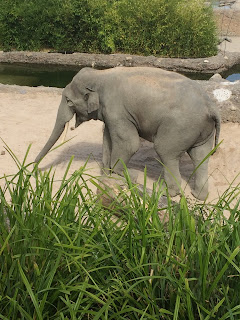Day 4
Today, I woke up and made breakfast. I then headed straight to the train station to go Läderach chocolate factory. I was very nervous about taking the right train and getting off at the right stops, however, I had no problems. Thanks to my Eurail Pass, I was able to get from Zurich to Bilten, Switzerland without having the stress of purchasing tickets. The train was quite comfortable but I was paying more attention to the views. The commute lasted about an hour, where the track ran right along Zurich Lake. Here is a video of the view of the Lake from the train and a picture of my first Eurail Global Pass trip that was stamped by the conductor.

My experience at Läderach was more than I could have imagined. Upon arrival, I asked for Susi Baumann, the woman that I had previously emailed. She arrived with a warm welcome and took me on a private tour of their chocolate facility, explaining the history of the company, their chocolate making process, and why she thinks Läderach chocolate is so unique.
As I mentioned in my last post, Läderach is a family owned company that began in 1962. Rudolph Läderach invented the hollow shell truffle which is one of the staple products of the company. Additionally, Läderach is well known for serving fresh chocolate. This means that the product has to be under 42 days old to sell. Susi stated that Läderach chocolate is, "The freshest chocolate you can eat." She mentioned that other Swiss chocolate companies such as Sprüngli mass produce their chocolates and will sell products that are months to even a year old. Läderach produces 1,000 tons of chocolate per year. Sprüngli produces this much chocolate in a few weeks.
Läderach gets most of their cocoa beans from Africa and South America. They buy them directly from the seller and avoid exchanging stock cocoa beans. The beans are cut in this location and the insides are scooped out. The smaller beans inside are sent to Läderach facilities. These beans are cleaned through a sifter and are then treated with infrared heat to break the shells open. The beans then go into the breaking process, where the shell pieces are separated from the nib (inside of the bean). The nibs are milled and go into a mixer that smashes the beans into a fine powder. Next, the powder goes into the conching process in the mixing machines. This liquid cocoa is sent to the factory in Endenna, Switzerland where a majority of the chocolate is produced.
Susi explained that three factors determine how chocolate companies can vary:
1. Where the company gets their cocoa beans
2. The amount of ingredients that they use (percentage of cocoa butter and sugar for example)
3. Their production process
As I travel to other chocolate companies, I hope to use these factors to make my comparisons.
Here are some pictures of the factory and my experience at Läderach.

When I got back from Läderach, I decided to go to Zurich Zoo. I took the tram and was at the Zoo in about 30 minutes. The Zoo is very nice, clean, and big. However, the main attraction has to be their elephant area. Built in 2014, the elephants have a beautiful indoor and outdoor facility that is spacious and well kept. This was a trip well spent.










Comments
Post a Comment